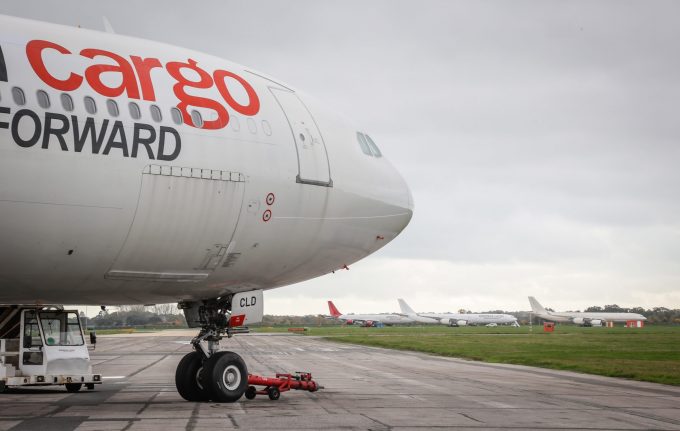IBA warns of oversupply of narrowbody conversions and lease rate fall
The current rate of B737-800 conversions needs close monitoring, with a potential oversupply that could ...
TFII: SOLID AS USUALMAERSK: WEAKENINGF: FALLING OFF A CLIFFAAPL: 'BOTTLENECK IN MAINLAND CHINA'AAPL: CHINA TRENDSDHL: GROWTH CAPEXR: ANOTHER SOLID DELIVERYMFT: HERE COMES THE FALLDSV: LOOK AT SCHENKER PERFORMANCEUPS: A WAVE OF DOWNGRADES DSV: BARGAIN BINKNX: EARNINGS OUTODFL: RISING AND FALLING AND THEN RISING
TFII: SOLID AS USUALMAERSK: WEAKENINGF: FALLING OFF A CLIFFAAPL: 'BOTTLENECK IN MAINLAND CHINA'AAPL: CHINA TRENDSDHL: GROWTH CAPEXR: ANOTHER SOLID DELIVERYMFT: HERE COMES THE FALLDSV: LOOK AT SCHENKER PERFORMANCEUPS: A WAVE OF DOWNGRADES DSV: BARGAIN BINKNX: EARNINGS OUTODFL: RISING AND FALLING AND THEN RISING

A new German airline has stirred industry interest in converting A340s, which despite niche appeal, could boast some advantages.
A340 conversions have struggled to gain momentum over the years– except for Bournemouth-based European Cargo, which converted a fleet of ex-passenger aircraft into long-haul freighters, there’s been little movement in the market.
But Universal Sky Carrier (USC) plans to convert its A340-300s and -600s, with a main deck cargo door developed by Avensis Aviation.
This will be, reportedly, the first “plug-type” main deck cargo door and features a separate crew cabin section, a rigid cargo barrier, a full Class E cargo compartment and a main deck cargo loading system, which is expected to significantly reduce conversion downtime.
“Our target is volume cargo, such as e-commerce,” MD Klaus Dieter Martin told The Loadstar. He hopes the first cargo door aircraft will enter service by 2026.
The current fleet of A340-300 and A340-600 aircraft is 125-strong, according to advisory firm IBA, but not all fit the bill for feedstock potential.
“This is because a large proportion of these aircraft are stored and may be in poor condition – either too costly to fix or already earmarked for teardown,” said Jonathan McDonald, manager for classic and cargo aircraft and an ISTAT-certified senior appraiser.
The A340-300s IBA would deem as ‘ideal feedstock’ include five operated by Edelweiss Air built in 2003. These are still active but will eventually need to be replaced. Two others fly with the German Air Force, likely to be replaced by newer A350-900s soon, and another two operate with Hi-Fly Malta.
The most significant fleet flies for Lufthansa; some 13 A340-300s that will be replaced following an entire career with the German airline. Swiss has four aircraft that will also likely be replaced quite soon.
Operators could be tempted by the cheap acquisition costs of an A340, but perhaps be reluctant to fly a four-engine freighter, pushing that programme to a niche market. Mr McDonald agreed and added: “It’s high speed and range will be advantageous, as the aircraft will volume-out rather than weigh-out, so would be ideal for routes such as Frankfurt to Hong Kong. But the high cost of four-engine operation will keep this niche.”
But USC’s Mr Martin said: “I think operators don’t really care if there are two, three or four engines on a freighter, what they care about is dollars per kilo or per cubic metre.”
He said USC had confidence that the A340 would give the airline a key advantage over other aircraft – except the 777-200/300.
“The A340-600, for instance, has a higher volume than a 747-400 and is similar to the new 777-300F, but with the 777, we are talking about unit costs of $60m to $80m. We are a start-up and cannot afford such assets.
“With the low asset cost [of the A340s] and skipping every second fuel [tech stop] landing, I think we can still be very competitive,” Mr Martin argued.
Comment on this article